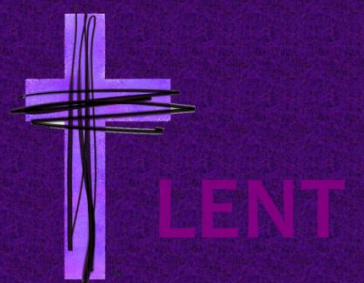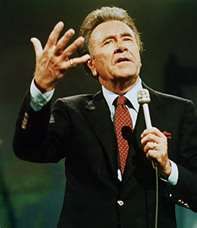
In every one of our lives there are salient events which we look back to and recognise as important transition points. For some it was the first day at work, for others it was the day they got married. There may be a whole series of such events, but the key ones are the moments which have a strong sense of before and after. ‘Before I started work I never had any money but then … Before I got married I visited the pub three times a week, but afterwards I stayed at home to be with my wife’. These important events that mark transitions in our personal lives, extend to events we share with others. We also have moments we share with the whole of society. There used to be a time when an older generation was always talking about the time ‘before the war.’ I cannot remember whether the comparison was an expression of relief or regret. If the truth were known, it was probably a bit of both.
The advent of the coronavirus is one of those societal life-changing episodes (like the war) which will be corporately remembered as a before/after event. We will, in all probability, refer back to the time before the virus with some shorthand expression because things then were different from whatever is to unfold in the future. What the future brings is unknown to us. But it is likely that there will be things that BC (before coronavirus) we used to take for granted but are no longer available to us. We will think about them with nostalgia and longing. The Church, like every other institution, will have its own set of BC memories.
If, to take the pessimistic view, the c-virus age is with us for a long time to come, the old norms of social interaction will change. We may have to get used to the two metre rule for speaking to other people. As far as the church is concerned, there are many congregations where the two metre convention has always applied. These will probably also be the same congregations that resist the Peace with great passion. One cannot imagine that the providers of box pews in the 18th century designed them with the idea that individual members of the congregation would ever greet or touch each other. The revival of box pews, with their ability to isolate family groups from each other, might well have a come-back in the post c-virus age.
On a more serious note, the advent of the rules which have closed church services right across the land, brings into focus the way that physical proximity and touching are, for some, very much part of normal worship activity. While not every church encourages lengthy hugging and physical closeness, they are many that attract followers precisely because they do. It is these churches whose members may find the enforced closure of services the most debilitating to their overall faith and practice. Every Christian will be weakened spiritually by the enforced absences from worship services. The greater damage may however be felt by those who faith is bound up with a strong corporate experience which encourages actual touch. In short, some Christians seem to experience the divine only in a crowd situation, involving tactile experience and a strong leader to coordinate the event. At such services the right music has to be played and the right emotional/spiritual buttons pressed by the person on the platform for worship to ‘work’.
At the heart of this reflection is a question. Is our faith something between us and God which is assisted by coming together with others for mutual encouragement? Is it, alternatively, an experience that is completely dependent on the other people present? Are they, in other words, essential or merely helpful to us for the act of worship? In previous blogs, I have spoken about styles of Christian worship which themselves can create patterns of dependence on a minister and a crowd environment rather than on God. Along with these emotional ties to the minister, there is an attraction to a style of what I would call ‘Christian pop music’. The music, the crowd experience and the attachment to a leader can become forms of addiction. When a enforced separation from these ‘props’ takes place, this will result all too easily in withdrawal symptoms similar to bereavement. No doubt God can be experienced through these things, but equally when they are withdrawn for whatever reason, there may be a serious void experienced in their absence. The church going experience that involves any kind of addictive dimension will always be a fragile one, and this will become apparent when this experience is withheld.
My hope is that not every Christian will find the absence from church services such a difficult obstacle in their retaining a lively Christian faith and practice. If churches are closed for three months or more, what will we find when we return? If I have to make a prediction, I would expect to find greater spiritual resilience among those who have already learned to think, pray and reflect as individuals. These will not be those caught up in a dependant party line rooted, say, in the debates of the 16th century. Rather these resilient Christians will be aware of many ways of being Christian, some of which have focused, not on any kind of crowd experience or rousing music, but on aloneness. The Christian monastic tradition, alive to this day, is one example of this. The word monastic means just this, being alone. Jesus himself, spent much time on his own with his Father. We have the account of the Gethsemane experience as well the time in the desert. In my own personal Christian pilgrimage, I am much indebted to the tradition of the Desert Fathers. They record their own struggles with faith and belief and much of this was undertaken in complete isolation from other human beings. No one today is suggesting that all Christians should become hermits. But, by acknowledging the existence of that tradition, we can begin to draw on some of the strengths of that way of discipleship to meet our present crisis. A Christian with some sense of the power of the monastic or solitary Christian life, will, I believe, have the capacity to bounce back from the enforced Churchless period that stretches out before us.
This coming Sunday many churches will be physically open during the normal times of worship. There will, I hope, be individuals there occupying the stillness and space to be alone and to begin to discover, if they have not already, a different way of being close to God. This is the way of stillness, quiet and aloneness. That is the way of prayer and devotion shown to us by many in the Christian tradition, the monks, the mystics and the solitaries through the centuries. There is much that this distinctive tradition can teach us for our c-virus age and we need to embrace it more fully.









